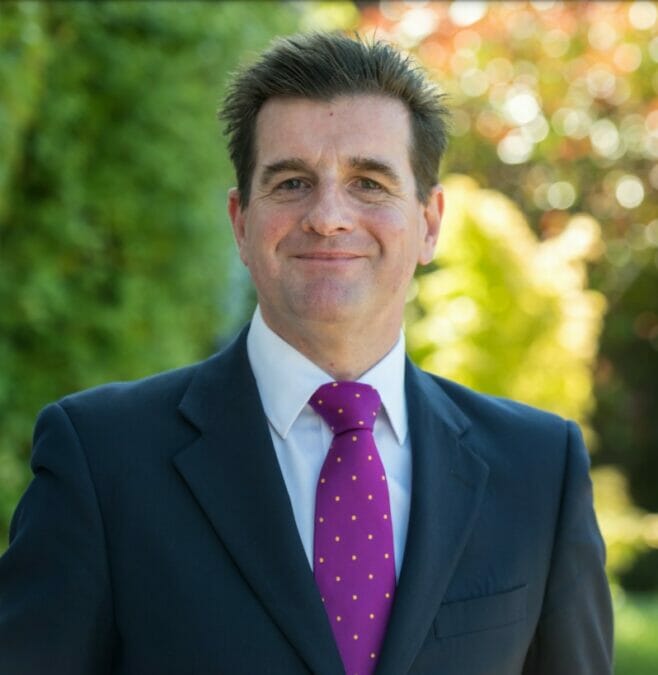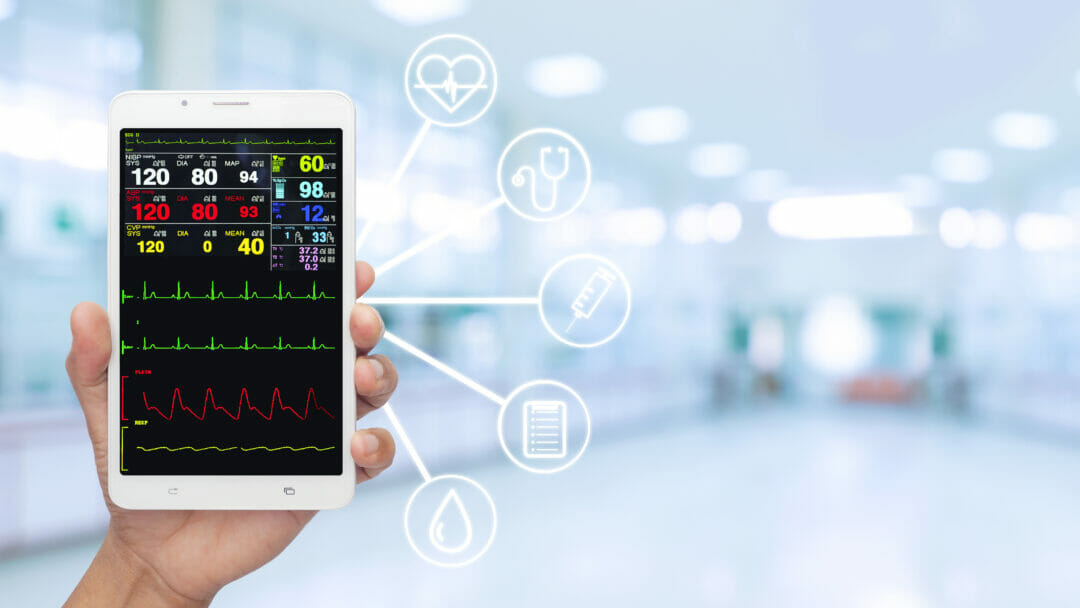Covid-19 has exposed the long-standing resource problems faced by the world’s health systems. Despite the ingenuity and dedication of front-line staff, the backlog of procedures and treatments has built up exponentially. Already a priority, remote monitoring technology will continue to grow in importance supporting healthcare recovery.
In the US, for example, a study at Brigham and Women’s Hospital in Boston found care at home using remote monitoring technology not only improves outcomes but also reduces costs by 40%. Participating patients were 70% less likely to be readmitted.
And across the UK, medical grade wearables and devices monitor the health and vital signs of patients remotely enabling care providers to proactively manage care and potentially reducing hospital admissions. In a recent example in London, “wearables” in the form of patches collected the vital signs of people quarantining before or after travelling abroad. This has been important during the pandemic as remote monitoring reduces the likelihood of Covid transmission and even the requirement for personal protective equipment. In Northampton, staff monitored chronic illness in patients recovering from coronavirus infections, while in Liverpool, the remote use of blood oximeters enabled creation of virtual wards in people’s homes for those with Covid symptoms.
Why cloud is the cornerstone of digital transformation in healthcare
The value of remote monitoring demonstrated during the pandemic has spotlighted that we are on the cusp of something great in remote monitoring, provided device companies and start-ups learn four key lessons:
- We need to allay the concerns of GPs and clinicians who have valid concerns about becoming overwhelmed by the volume of data generated by remote devices and indeed owing to the volume of data generated monitoring is managed by separate teams. As a result, data needs to be integrated back into GP’s system to retain oversight of the patient and maintain their doctor-patient relationship. Remote monitoring has worked well in specific situations during the pandemic but we need solutions that work for long term monitoring and integration system-wide.
- If you aren’t going to overwhelm clinicians, it means that the devices need to be able to help the team manage by exception. This can take the form of the provision of notifications to the care team or even recommend interventions for the team to make. This means medical devices being able make decisions and this immediately makes it a type of Class II device which has a far stricter set of regulations that a manufacturer has to conform to. The EU Medical Directive, which came in effect from May this year, can be an obstacle, in particular for start-ups and new entrants to overcome, so think about this.
- There is still a huge issue of getting business cases approved for remote monitoring and this is because so many devices require their own infrastructure. Therefore, in the business case not only are you carrying often sizeable running costs, you are also weighed down by a large cost of setting the service up with the accompanying infrastructure. This is why having open standards-based interoperability baked into your product from the start is so important, so it can run on shared infrastructure. Being able to use an interoperability standard such as HL7 FHIR is hugely advantageous as it works across the internet. Whether it’s medical grade devices or even consumer devices secure internet-based interoperability is what is required.
- Integration with 3rd Party Electronic Medical Record (EMR) systems that clinicians use may well seem to be the most attractive way to surface your data from remote devices, but this is not for the faint-hearted. EMR’s are built in a way where they own much of the Master Data and where they assume that they own certain data. An EMR is a Medico-Legal record so how data enters it from 3rd party applications must be very carefully managed. They may not have been designed to allow 3rd party apps to update information in the EMR or to record that it was done remotely by a machine. This is because they cannot assure the provenance, accuracy or preciseness of the data. This is another reason why you have separate teams looking after these patients using standalone systems.
What every healthcare technology leader needs to know about cloud data and security
This leaves a choice – work with each EMR vendor individually to allow integration, which is not realistic given the number of vendors in the market. Alternatively, a more innovative way is to use SMART (Substitutable Medical Applications and Reusable Technologies) on FHIR, which provides a straightforward way for third party apps to authenticate and integrate with other healthcare applications, including EMRs. These applications essentially snap-on to other SMART enabled applications with very little set-up. Many EMRs support this standard, so if the remote monitoring software aggregates the data for each patient into an application that supports SMART on FHIR it will be able to seamlessly work with other SMART on FHIR enabled EMRs. By standardising these processes, health care providers can utilise more apps, and MedTech developers can write apps for a wider audience.
In summary, for remote monitoring to fulfil its potential, device data must be accessible, integrated in to the EMR and must not overload clinicians. Any clinical decision support should be capable of being run in a separate SMART on FHIR application, separating the device from value-adding logic. This application will also be a medical device, but with the option of competing on the clinical decision support services in a separate application that could operate across multiple devices. Little or no extra infrastructure should be required, with internet operability generating high levels of cost-effectiveness. Any device should also integrate into EMRs in a safe way.
Remote monitoring devices have a major role to play in continuing the modernisation of care provision to support clinicians’ and ease the burden on hospital resources. The integration of their data with health IT systems and delivery across the internet, however, is essential, as is compliance with regulation.








